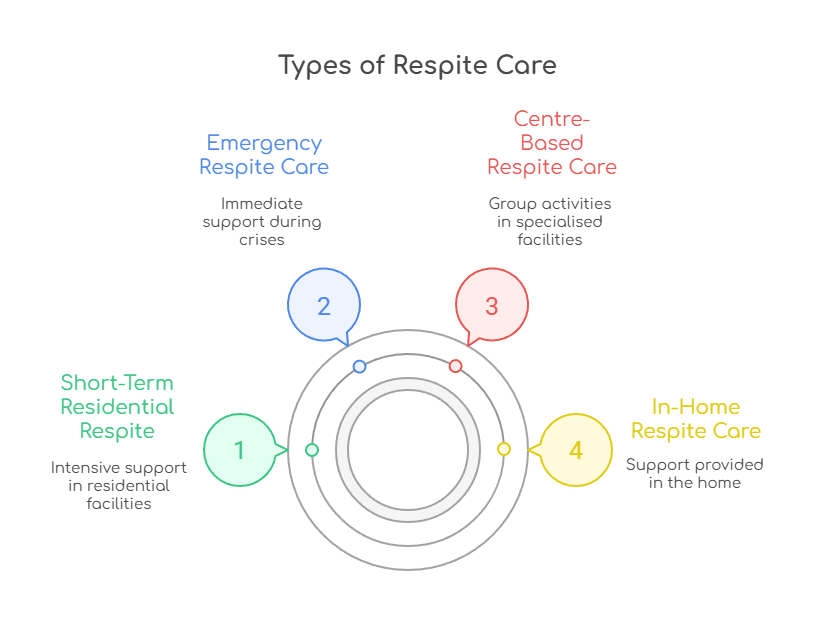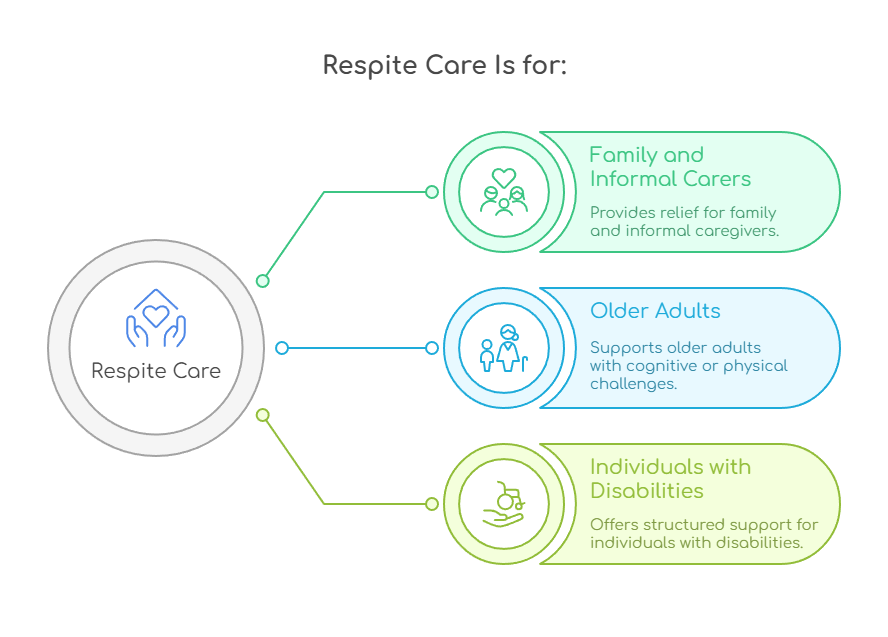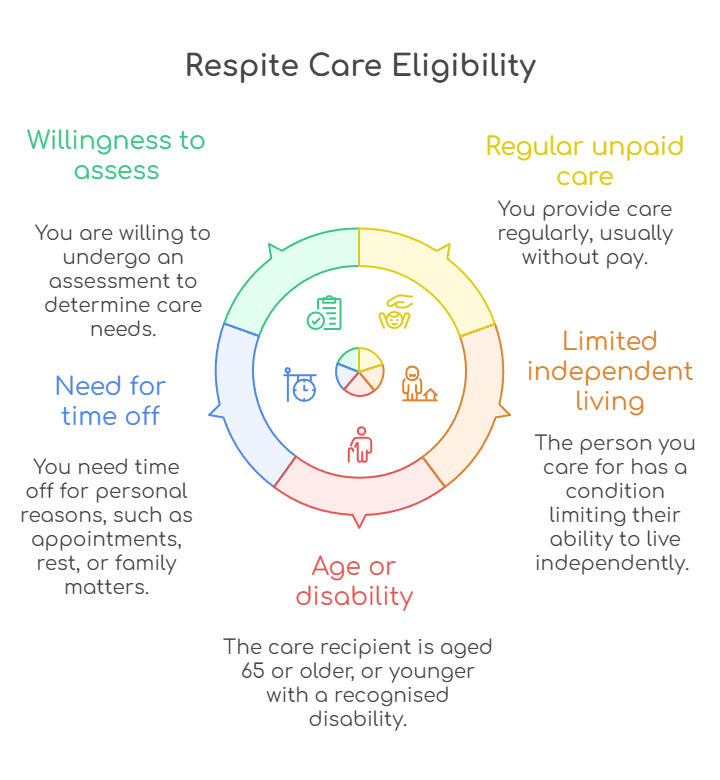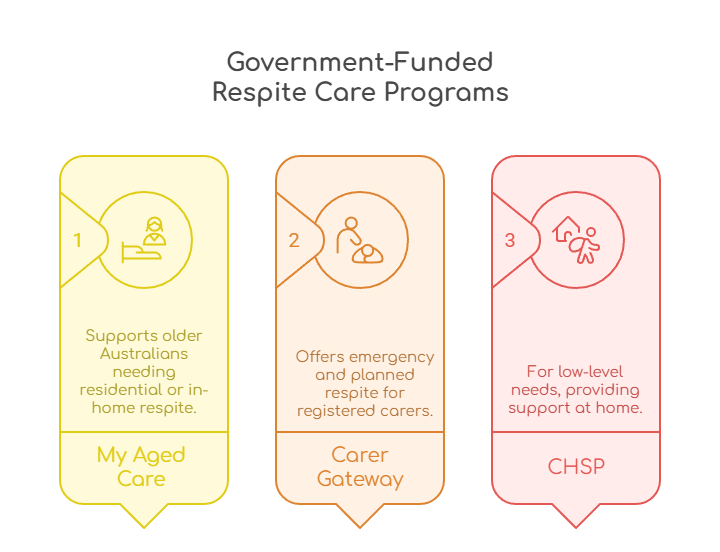By
Haisey Home Care
Updated on: July 18, 2025
•
x min read
Wondering how to qualify for respite care? Read this article to learn about the steps needed to access short-term caregiver support.

Summary: To qualify for respite care, you typically need to be a primary carer or care recipient with high care needs. Eligibility depends on factors like age, disability status, and daily support requirements. Government programs, like My Aged Care, the NDIS, and Carer Gateway, offer free or subsidised options. Private care is also available without assessments. The application process involves registering, undergoing an assessment, and submitting relevant documentation. The last step is to choose a provider like Haisey Home Care, which offers personalised guidance at every step.
Caring for a loved one is a rewarding but demanding journey. It doesn't matter if it's an ageing parent, a partner with a disability, or a child with complex care needs.
Respite care offers a lifeline to different types of caregivers. It provides temporary relief while making sure their loved one is safe and supported.
But how do you qualify for respite care? Who is eligible? And what are the steps to apply?
This guide covers everything you need to know about respite care eligibility. We'll talk about everything from criteria and funding options to the application processes.
We'll also provide real-world tips from Haisey Home Care, your trusted partner in navigating care services in Australia.
Respite care is a form of temporary or short-term care. It's provided to those who need ongoing support because of:
It allows carers to take a much-needed break. They can relax knowing their loved one is looked after by trained professionals.
There are different types of respite care available for various needs, including:
This service brings a professional carer into the home to provide support while the primary carer takes a break.
Offered in specialised facilities, this type includes day programs and social activities in a group setting.
Designed for situations where a carer becomes unexpectedly unavailable because of an illness or crisis.
A temporary stay in a residential aged care facility. It's often used to trial long-term care arrangements or provide intensive support.

Families often turn to respite care:
Respite care serves both practical and emotional functions. It supports both the caregiver and the care recipient.
Eligibility is broad for respite care. It's flexible to accommodate a wide range of situations.
Respite care is primarily designed to support three key groups:

There are some common misconceptions about who is eligible.
In general, you may qualify for respite care if:
Many people believe you must be providing full-time care or that you cannot access respite if you are already receiving other types of government support.
In reality, the system is designed to be inclusive and flexible. It accommodates a variety of carer and care recipient scenarios.
You have to meet certain criteria to access respite care through government-supported services.
Here are the key indicators that you may be eligible for respite care:

You will also need to provide documentation as part of the application process. This may include:
Meeting these requirements doesn't guarantee immediate access. But it places you on the right path to receive subsidised or free respite care.
There are several funding options available, which depend on your circumstances. Each has different qualification criteria.
Free Government-Funded Respite Care may be available through programs like:

To qualify for these, you typically need to be registered with the appropriate service (e.g., My Aged Care or Carer Gateway). You also need to complete a care needs assessment.
The next step is to provide supporting documentation confirming your care role and the recipient's condition.
Subsidised Respite Care is often funded through:
To access subsidised services, you must undergo a structured assessment and planning meeting.
After that, you must agree on respite support as part of your care plan.
Private Respite Care is available without eligibility criteria. It is funded out-of-pocket and is a good option for those who:
Applying for respite care can feel daunting, but it becomes manageable when broken down into clear steps:
Begin by consulting your GP, social worker, or support coordinator. They can provide referrals or documentation to support your application.
Depending on your situation, register with:
Once registered, you will be contacted for an assessment. This may be done by a Regional Assessment Service (RAS) or an Aged Care Assessment Team (ACAT) for My Aged Care, or through a planning meeting for NDIS participants.
Collect the necessary documents, including care statements, medical reports, and financial information.
After your assessment, you will be informed of your eligibility and connected with approved service providers.
Work with your provider to schedule the type of care needed, whether it is in-home, centre-based, or residential.
If you're not eligible for government-funded respite care, don't worry. There are still options available.
Alternatives include:
It is also possible to reapply if your circumstances change.
Keeping a record of your care activities and updating medical information is a wise idea.
Qualifying for respite care is more achievable than many people realise.
By understanding the eligibility requirements and working with experienced providers like Haisey Home Care, you can use this much-needed support.
If you're ready to begin your respite care journey, or if you're unsure about your eligibility, contact Haisey Home Care for a free consultation.
We'll help you navigate the system and make sure you and your loved one get the support you deserve.
Reach out to us to learn more about our services.
{{cta}}
Chat with us to learn more about how we can help you. Book in a free, no obligation in-home consultation.
